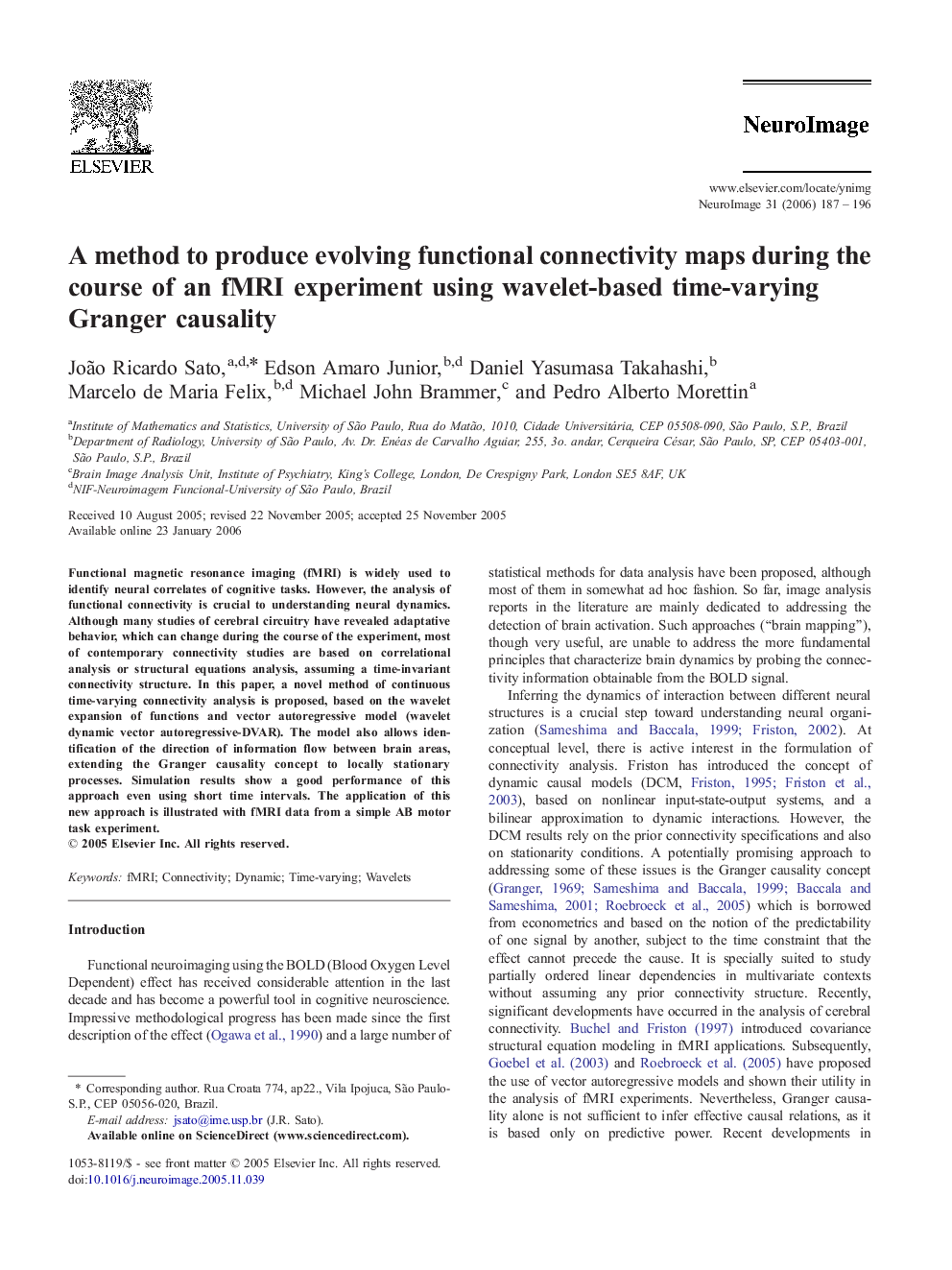| Article ID | Journal | Published Year | Pages | File Type |
|---|---|---|---|---|
| 3073785 | NeuroImage | 2006 | 10 Pages |
Functional magnetic resonance imaging (fMRI) is widely used to identify neural correlates of cognitive tasks. However, the analysis of functional connectivity is crucial to understanding neural dynamics. Although many studies of cerebral circuitry have revealed adaptative behavior, which can change during the course of the experiment, most of contemporary connectivity studies are based on correlational analysis or structural equations analysis, assuming a time-invariant connectivity structure. In this paper, a novel method of continuous time-varying connectivity analysis is proposed, based on the wavelet expansion of functions and vector autoregressive model (wavelet dynamic vector autoregressive-DVAR). The model also allows identification of the direction of information flow between brain areas, extending the Granger causality concept to locally stationary processes. Simulation results show a good performance of this approach even using short time intervals. The application of this new approach is illustrated with fMRI data from a simple AB motor task experiment.
